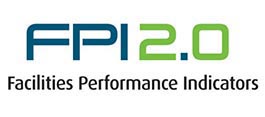
As this is my first opportunity to write for Facilities Manager magazine, I thought about the aspects of APPA membership that matter to the University of Wisconsin-Milwaukee (UWM) and to my career personally. Then I thought about matters that affect our members and decided to write an article that is about a little bit of both.
Membership in APPA is valuable in many ways, but my favorite features—and those most useful to me—involve the ability to compare and collaborate with other universities through the unique combination of access to essential metrics and rewarding personal relationships that APPA offers. My introduction to APPA in the Midwest Region of APPA (MAPPA) region was 10 years ago, when MAPPA Past President Greg Adams was our new director at UWM. Though UWM participated in MAPPA, I wouldn’t say we were “active” members. We didn’t come close to really utilizing the benefits of APPA until Greg took the reins. He illustrated how the Facilities Performance Indicators (FPI) could be a tool to visually express our desperate need for more funding by using them to compare our situation with that of similar organizations. The fact is, words just don’t capture the attention of an overworked vice chancellor like a colorful graph does!
Getting Acquainted with FPI
 When I was assigned the FPI survey, I had no idea that doing the research and making professional connections would propel me into the career I have now. As an office associate at the time, I thought the FPI survey would simply be a fun challenge. I had never created a data dictionary, written a project charter, nor “defined my stakeholders” before. But Greg was so positive about the possibilities of the FPI! I was six or eight months into my job and still learning about UWM, but I knew our organization needed improvement. This project seemed like a reasonable step in the right direction, so I pretended I knew what I was doing. How hard could it be?
When I was assigned the FPI survey, I had no idea that doing the research and making professional connections would propel me into the career I have now. As an office associate at the time, I thought the FPI survey would simply be a fun challenge. I had never created a data dictionary, written a project charter, nor “defined my stakeholders” before. But Greg was so positive about the possibilities of the FPI! I was six or eight months into my job and still learning about UWM, but I knew our organization needed improvement. This project seemed like a reasonable step in the right direction, so I pretended I knew what I was doing. How hard could it be?
I learned that it could be very hard. It was one of the most challenging responsibilities I’d ever had. But I learned how to use deeper features of our financial system, and I made connections with campus planning staff that taught me about state projects, UW-System funding, where to find all-agency project cost/information, and so much more. I learned how to compare our work-order system reporting with our financial system reporting. I learned that a full-equivalent (FTE) isn’t a “full-time employee”; it’s every equivalent of 2,080 hours of labor (duh) and involves how to find the percentage of our budget that is spent on benefits. And I learned about budgets—oh yes, the sad truth of how facilities budgets are almost always the first to be cut, while (ironically) more funding is found to build more spaces for us to maintain. And I learned from APPA that this is not a Midwest phenomenon—universities across the country experience the same circumstance.
Hitting “Submit”!
I remember the moment I made the final click to submit the FPI survey that ultimately directed my career. It was 9:30 p.m. and I was so nervous. But I didn’t have any more to give, the rows and columns of my spreadsheets were blurring, and I knew every question by heart. Greg and I wrote the longest Excel formula I’ve ever seen, and I don’t even remember which question it was for—something about our FTE percentage of maintenance labor compared to chargeable labor for carpenters and electricians. I think it was skewing our data for total maintenance dollars per gross square foot. Without APPA and before 2012, that concept would have made no sense to me whatsoever. I barely knew what metrics were.
When the survey came out and I learned how to extract the results, I learned about Carnegie Classifications and how to choose organizations for the most relevant comparisons—not just UW-Madison because we’re jealous they get more money, or University of California, Los Angeles (UCLA) because we wish we were big like them. We compared ourselves to others that are struggling—because many of us were (and are). We were able to illustrate relevant metrics with bar graphs instead of just numbers, and it mattered. Greg presented the results to all facility services staff in (2) two-hour sessions. We called it “Synchro” to kick off his vision for the next few years of facility services growth. I asked myself how much of the presentation really hit home and how seriously our people took it.
Making Things Better
The answer to that question is one of the best parts of this article. Now it’s 2022, 10 years since we first did the FPI. We have gone through some organizational changes and leadership challenges. We have a new associate vice chancellor (AVC) who met with the individual groups in facilities last year—environmental services, stores, trades, and others, to gauge morale and dig into the core of what’s lacking in our organization. She wanted to know how we could make things better. The answer was—and still is—through communication and vision. Our people always want to know where we are, and where we want to go. After those meetings, the AVC came to me and said that multiple tradespeople asked about “a report that Greg Adams did.” A smile spread across my face. I told her I knew exactly what she needed and sent her the FPI report. I had already started working on the survey for 2021. In all the groups she met with, one overwhelming response was that they want to know what’s going on. Why are we here? Why should I care? What are our goals?
Believing in APPA and Yourself
So, membership matters because APPA offers us the tools to provide metrics and presentations that make a difference in many ways—because people are listening. Membership matters because if I didn’t have to do the FPI, I may have never decided that facilities was the place for me. Having a director that believed so strongly in APPA inspired me to strive for organizational improvement and encourage my staff members to get involved. Membership matters because APPA provides the relationships that make you keep going and keep trying to make a difference. Membership matters because we are all trying, and it’s difficult all over the world—but APPA shows us we’re not alone. Every year APPA is creating new benefits and tools to help facilities professionals do a better job, increase effectiveness, learn new techniques, and communicate our vision to our staff and our leaders.
Next time, I’ll tell you about my experience with the Facilities Management Evaluation Program (FMEP).
Dawn Aguilera is operations support manager at the University of Wisconsin-Milwaukee in Milwaukee, WI. She can be reached at [email protected]. This is her first article for Facilities Manager.
The deadline for completing the FPI survey for FY 2021 data is Thursday, June 30, 2022. Learn more here.
Membership Matters
Explores the community benefits of leadership in educational facilities for professionals seeking to build their careers, transform their institutions, and elevate the value and recognition of facilities in education. To contribute, contact Kevin Willmann, FM Column Editor.
See all Membership Matters.


